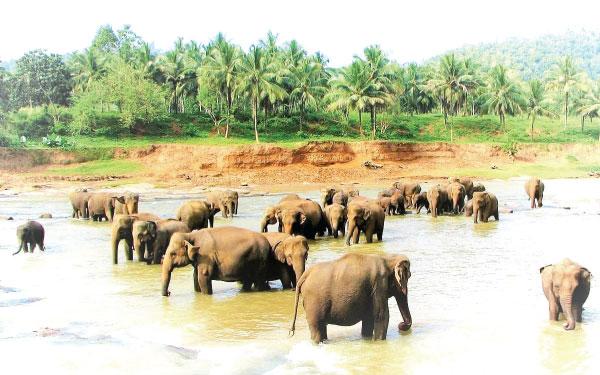
The elephant is the King of the Sri Lankan jungle. No other animal dares to challenge the elephant’s kingship. In their wild state, elephants live in small herds, about twenty- five in each. A full grown male is usually the leader of the herd. Such a leader, in all his majesty and dignity, roams the jungle with his followers. Some elephants have tusks from which we obtain ivory; but ‘tuskers’ are now rare in Sri Lanka.
Today, the Sri Lankan elephant belongs to a dying race, The opening of forests for cultivation has steadily reduced the size of our jungles. The elephant is thus deprived of his natural home and is sometimes forced to roam on cultivated land.
When this happens, the villagers shoot the animals. There are about a thousand wild elephents in Sri Lanka today. To preserve the wild elephant and other wild animals, the Government has set aside certain forest areas called‘ Game Santuaries,’ where animals can live in safety and breed peacefully. No one is allowed to shoot in these areas.
The Ruhunu National Park is one of these protected reserves, and many wild elephants, leopards, deer and other animals can be seen there in their natural surroundings
A full- grown elephant eats a much fodder a day. Elephants are fond of bathing and they spend hours in the water. They lie on their side in shallow river-beds and lift their trunks above the surface of the water. It is a very interesting sight to see baby elephants bathing. They are very playful and full of mischief, just like little children. Elephants have poor sight and people can approach within about a hundred yards of wild elephants.
A famous photographer, Eric Swan, once dared to go so close to a wild elephant and lost his life in the attempt.
Sometimes, old elephants develop solitary habits and become dangerous to people. They wander away from their herds and often attack human beings. Such an elephant is called a ‘rogue elephant’ and the Government issues licences to people to shoot such dangerous animals.
From very early times, the elephant has been trained to help man in various ways. It acts as a beast of burden for us and it ploughs our fields. It is also used in processions.
Vidath Amarawickrama
Grade 10
A/ Niwaththaka chethiya College
Anuradhapura
